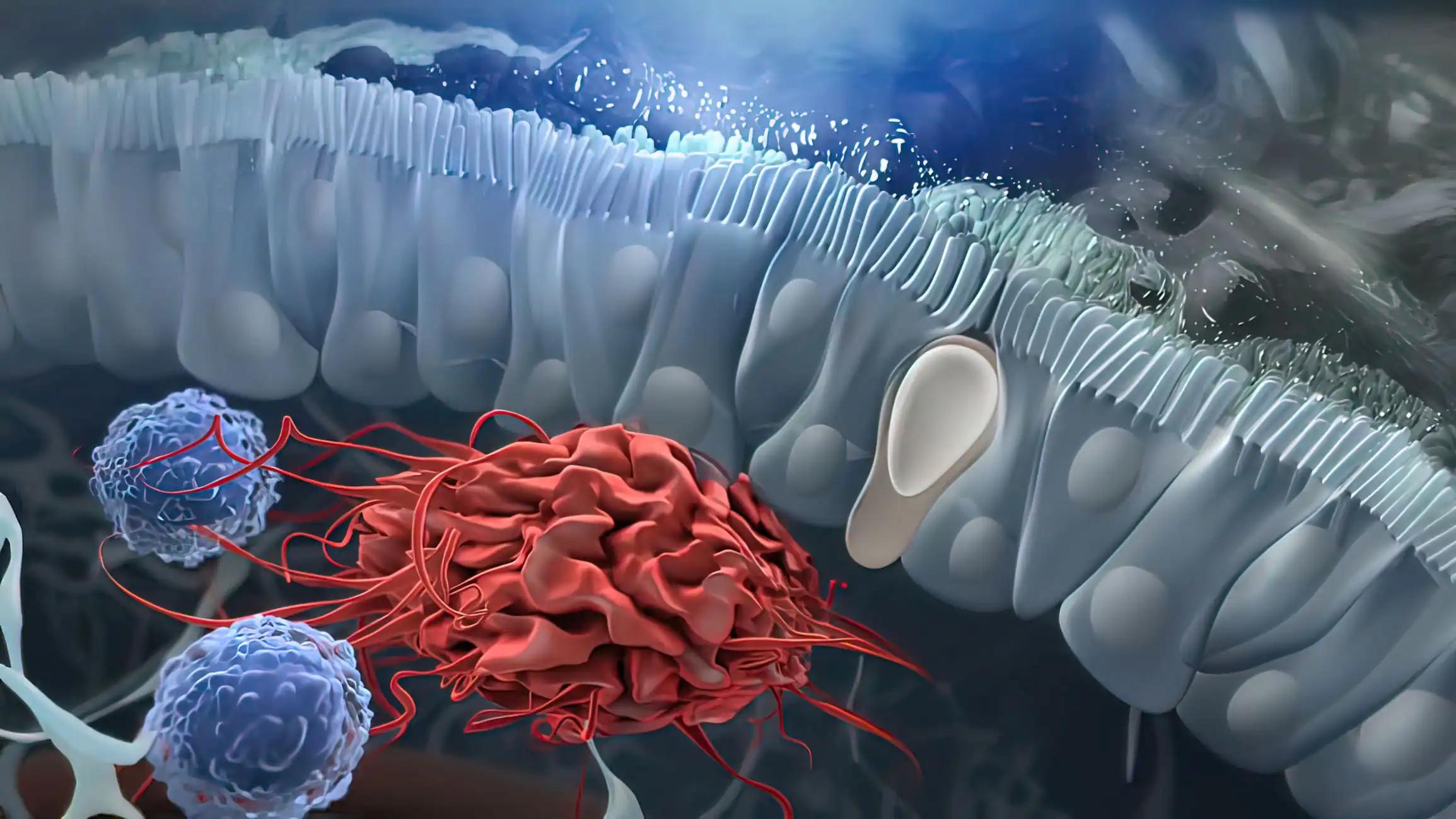KEY TAKEAWAYS
- The ZUMA-7 phase 3 study evaluated axi-cel versus chemotherapy-based SOC as second-line therapy in patients with early R/R LBCL.
- In the trial, 359 patients were randomized, 180 to axi-cel and 179 to SOC.
- Axi-cel showed a significant improvement in OS over chemotherapy-based SOC as second-line therapy in patients with early R/R LBCL.
In the ZUMA-7 trial, axicabtagene ciloleucel (axi-cel) was evaluated as second-line therapy over the chemotherapy-based standard of care in patients with early relapsed or refractory large B-cell lymphoma (LBCL).
The overall survival (OS) analysis was performed five years after the first patient was randomized according to protocol (01/25/2018). A log-rank test was employed to compare OS between the two arms, taking into account randomization stratification factors. Prespecified OS sensitivity analyses were also conducted to adjust for confounding factors related to subsequent cellular immunotherapy in the SOC arm. Additional endpoints comprised PFS, OS in specific subgroups, and safety. Exploratory analyses were carried out to determine the relationship between OS and axi-cel pharmacokinetics and product features.
A total of 359 patients were randomly selected, 180 assigned to axi-cel and 179 to SOC. At a median follow-up of 47.2 months, axi-cel exhibited a significant improvement in OS compared to SOC (HR: 0.726, 95% CI: 0.540–0.977; stratified log-rank 1-sided p = 0.0168 [efficacy boundary, 0.0249]). Axi-cel outperforms SOC in terms of median OS (not reached vs. 31.1 mo, respectively). There was a 48-mo increase in OS estimates with axi-cel (54.6% vs. 46.0%). This benefit is consistent across key subgroups, including age ≥65, primary refractory, early relapse, high-grade B-cell lymphoma, and high second-line age-adjusted IPI.
The study showed that 102 patients (57%) in the SOC arm received subsequent cellular immunotherapy off protocol. The prespecified OS sensitivity analyses indicated that axi-cel provided a greater OS benefit than SOC, with a stratified HR of 0.608 (95% CI: 0.449–0.824) by the Rank-Preserving Structural Failure Time model. Additionally, the investigator-confirmed PFS showed that axi-cel was more beneficial than SOC (HR: 0.506, 95% CI: 0.383–0.669), with estimated 48-month PFS rates of 41.8% and 24.4%, respectively.
No new cytokine release syndrome, neurologic events, or treatment-related deaths were documented since the primary EFS analysis. Axi-cel’s safety profile remains consistent with prior studies. There was an improvement in OS associated with an increased proportion of a naive T-cell phenotype (CCR7+CD45RA+ T cells, descriptive p < 0.05) in the infused product.
Axi-cel as a second-line therapy can substantially enhance overall survival over chemotherapy-based SOC for patients with early relapsed/refractory LBCL.
Source: https://onlinelibrary.wiley.com/doi/10.1002/hon.3163_22
Clinical Trial: https://classic.clinicaltrials.gov/ct2/show/NCT03391466
Westin, J. R., Oluwole, O. O., Kersten, M. J., Miklos, D. B., Perales, A., Ghobadi, A., Rapoport, A. P., Sureda, A., Jacobson, C. A., Farooq, U., Ulrickson, M. L., Elsawy, M., Leslie, L. A., Chaganti, S., Dickinson, M., Yang, Y., Schupp, M., To, C., & Locke, F. L. PRIMARY OVERALL SURVIVAL ANALYSIS OF THE PHASE 3 RANDOMIZED ZUMA-7 STUDY OF AXICABTAGENE CILOLEUCEL VERSUS STANDARD OF CARE IN RELAPSED/REFRACTORY LARGE B-CELL LYMPHOMA. Hematological Oncology, 41, 52-54. https://doi.org/10.1002/hon.3163_22



